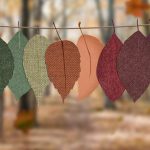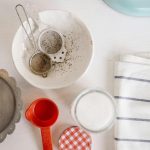Looking to elevate your fabric designs with a touch of artistic flair? Discover five breathtaking bleach dye patterns that will elevate your fabric game to the next level.
From the mesmerizing Spiral Tie-Dye to the sophisticated Geometric Stencil, these techniques offer a masterful way to transform ordinary fabrics into extraordinary works of art.
With these stunning patterns, you'll unlock a world of creative possibilities and achieve professional-level results that are sure to impress.
So, whether you're an experienced fabric artist or a newcomer to the world of bleach dye, these patterns will inspire and empower you to craft fabrics that are truly one-of-a-kind.
Let's dive into the art of bleach dye and unleash your creativity!
Key Takeaways
- Achieve a stunning spiral tie-dye pattern by folding and twisting the fabric before applying the bleach solution.
- Dilute the bleach solution to achieve the desired gradient effect for the ombre fade pattern.
- Geometric stencil techniques offer precise and visually captivating designs.
- Experiment with different application methods for a wide range of designs in the abstract splatter pattern.
Spiral Tie-Dye Pattern
You can achieve a stunning spiral tie-dye pattern by carefully folding and twisting the fabric before applying the bleach solution.
The spiral tie-dye technique involves gathering the fabric and twisting it tightly into a spiral shape. This creates defined sections that, when bleached, result in a captivating spiral pattern.
To enhance this pattern, consider using a color combination that complements the spiral design. For instance, using a combination of blue and green dyes can create a visually appealing ocean-like spiral effect, while a mix of warm tones like red, orange, and yellow can mimic the appearance of a fiery spiral. Experimenting with different color combinations can yield unique and striking results.
When applying the bleach solution, ensure that it's evenly distributed across the fabric to achieve a balanced and well-defined spiral pattern.
Ombre Fade Pattern
When creating an ombre fade pattern with bleach dye, start by diluting the bleach solution to achieve the desired gradient effect on the fabric. This fabric technique requires precision and attention to detail to achieve a smooth transition from one shade to another.
Here's how to create a stunning ombre fade pattern with bleach dye:
- Prepare the Bleach Solution
- Dilute the bleach with water in a well-ventilated area to achieve the desired gradient color.
- Test the solution on a small fabric swatch to determine the strength and timing needed for the fade effect.
- Application Process
- Dip the fabric into the diluted bleach solution, ensuring that the darkest end of the ombre pattern is submerged for a longer duration.
- Gradually lift the fabric to expose different sections to the bleach as you move towards the lighter end.
- Rinsing and Neutralizing
- Once the desired ombre effect is achieved, carefully rinse the fabric with cold water to stop the bleaching process.
- Then neutralize the bleach by soaking the fabric in a mixture of water and hydrogen peroxide to prevent further bleaching.
This DIY project is a popular fashion trend, allowing you to customize your fabrics with a beautiful ombre fade pattern.
Geometric Stencil Pattern
To achieve a striking geometric stencil pattern with bleach dye, start by securing the fabric firmly against the surface and carefully positioning the stencil over the fabric. Geometric stencil techniques offer a way to create precise and visually captivating designs on fabric. By using this method, you can achieve intricate and symmetrical patterns that add a modern touch to your fabric projects. Here's a simple yet effective geometric stencil pattern technique to elevate your creative fabric designs:
| Steps | Instructions | Tips |
|---|---|---|
| Step 1 | Secure the fabric firmly against the surface. | Use tape or weights to prevent shifting. |
| Step 2 | Position the geometric stencil over the fabric. | Ensure the stencil is aligned and centered. |
| Step 3 | Apply bleach dye carefully within the stencil. | Use a spray bottle or sponge for controlled application. |
Reverse Dip-Dye Pattern
Continuing from the previous subtopic on geometric stencil patterns, delve into the reverse dip-dye pattern to create captivating bleach dye designs on fabric.
The reverse dip-dye technique involves submerging the fabric into a bleach solution, creating a gradient effect from dark to light. Follow these steps to execute this technique effectively:
- Prepare the fabric: Choose a natural fabric such as cotton or linen and wash it thoroughly to remove any sizing or finishes that may interfere with the dyeing process.
- Color blending process: Mix the bleach solution in a well-ventilated area, following safety precautions. Dip the fabric gradually into the solution, holding it at different levels to achieve the desired gradient effect.
- Rinse and neutralize: Once the fabric reaches the desired color, rinse it thoroughly with cold water to stop the bleaching process. Then, neutralize the bleach by soaking the fabric in a solution of water and hydrogen peroxide.
Mastering the reverse dip-dye technique allows for the creation of stunning and unique bleach dye patterns on fabric, making it a valuable skill for any textile artist or designer.
Abstract Splatter Pattern
You frequently achieve an edgy and modern look by mastering the abstract splatter pattern technique in bleach dyeing.
Dip the fabric into a bleach solution and flick or drip bleach onto the fabric to create a dynamic and eye-catching design.
When blending colors in this technique, the result is a visually striking and unpredictable pattern that adds depth and texture to the fabric.
The abstract splatter pattern offers a unique way to customize your fabrics, allowing you to create one-of-a-kind designs.
By controlling the intensity of the splatter and experimenting with different application methods, you can produce a wide range of effects, from fine speckles to bold, dramatic splashes.
This method also lends itself well to creating a textured effect, as the bleach reacts with the fabric to produce variations in color intensity and a slightly raised surface.
Mastering the abstract splatter pattern opens up a world of creative possibilities, making it an essential technique for anyone looking to elevate their bleach dyeing skills and create truly captivating fabric designs.
Frequently Asked Questions
Can Bleach Dye Patterns Be Used on All Types of Fabric, or Are There Certain Materials That Work Best?
You can use bleach dye patterns on different fabrics, but some work better than others. Different materials produce varying effects, so it's important to consider the best fabrics and techniques for bleach dyeing.
Are There Any Safety Precautions to Take When Using Bleach for Dyeing Fabrics?
When using bleach for fabric dyeing, it's crucial to take safety precautions. Ensure proper ventilation, wear protective clothing, and use eye protection. These measures are essential for your well-being while creating stunning bleach dye patterns.
How Can I Prevent the Bleach From Spreading or Creating Unintended Patterns on the Fabric?
To prevent bleach from spreading or creating unintended patterns on fabric, use a barrier like plastic or cardboard to control the application. Experiment with different bleach dye techniques, such as spraying or stamping, to create intended patterns while protecting the fabric.
Is It Possible to Create Multiple Bleach Dye Patterns on the Same Fabric, or Will the Bleach Interfere With Each Other?
Yes, it's possible to create multiple bleach dye patterns on the same fabric. Experiment with different bleach resist methods, fabric dyeing, and bleach dye techniques to achieve layered effects. Explore and enjoy your bleach dye experimentation!
Can Bleach Dye Patterns Be Used on Colored Fabrics, or Do They Only Work on White or Light-Colored Materials?
Yes, bleach dye techniques can be used on colored fabrics. The bleach will remove the color, creating unique patterns. It's important to consider the original color when planning your design, as it will influence the final result.





